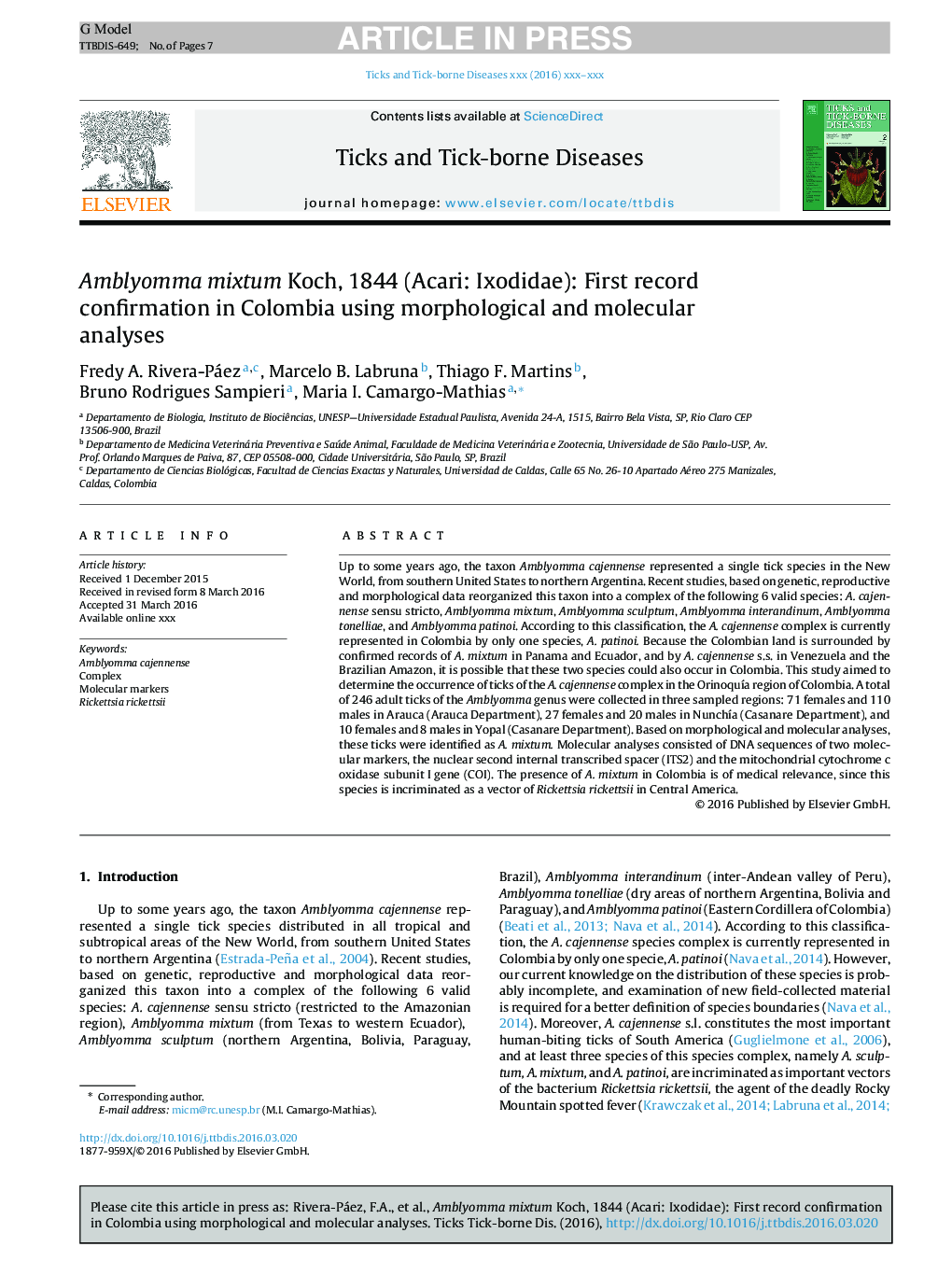| Article ID | Journal | Published Year | Pages | File Type |
|---|---|---|---|---|
| 5546400 | Ticks and Tick-borne Diseases | 2016 | 7 Pages |
Abstract
Up to some years ago, the taxon Amblyomma cajennense represented a single tick species in the New World, from southern United States to northern Argentina. Recent studies, based on genetic, reproductive and morphological data reorganized this taxon into a complex of the following 6 valid species: A. cajennense sensu stricto, Amblyomma mixtum, Amblyomma sculptum, Amblyomma interandinum, Amblyomma tonelliae, and Amblyomma patinoi. According to this classification, the A. cajennense complex is currently represented in Colombia by only one species, A. patinoi. Because the Colombian land is surrounded by confirmed records of A. mixtum in Panama and Ecuador, and by A. cajennense s.s. in Venezuela and the Brazilian Amazon, it is possible that these two species could also occur in Colombia. This study aimed to determine the occurrence of ticks of the A. cajennense complex in the OrinoquÃa region of Colombia. A total of 246 adult ticks of the Amblyomma genus were collected in three sampled regions: 71 females and 110 males in Arauca (Arauca Department), 27 females and 20 males in NunchÃa (Casanare Department), and 10 females and 8 males in Yopal (Casanare Department). Based on morphological and molecular analyses, these ticks were identified as A. mixtum. Molecular analyses consisted of DNA sequences of two molecular markers, the nuclear second internal transcribed spacer (ITS2) and the mitochondrial cytochrome c oxidase subunit I gene (COI). The presence of A. mixtum in Colombia is of medical relevance, since this species is incriminated as a vector of Rickettsia rickettsii in Central America.
Related Topics
Life Sciences
Agricultural and Biological Sciences
Animal Science and Zoology
Authors
Fredy A. Rivera-Páez, Marcelo B. Labruna, Thiago F. Martins, Bruno Rodrigues Sampieri, Maria I. Camargo-Mathias,
